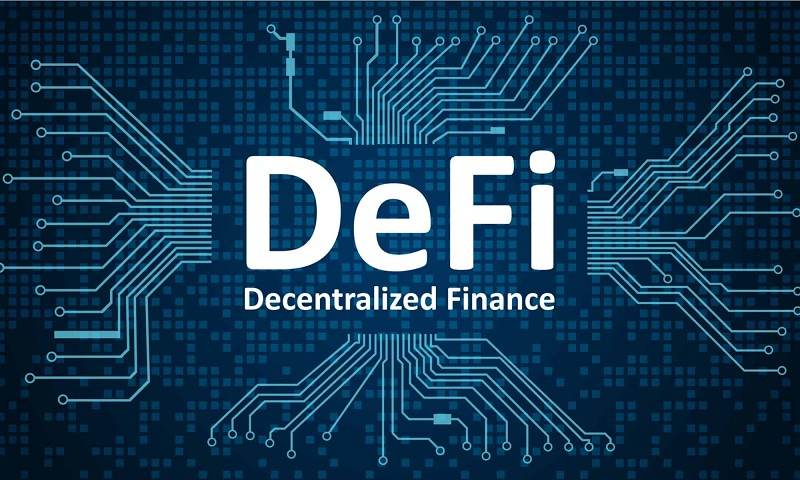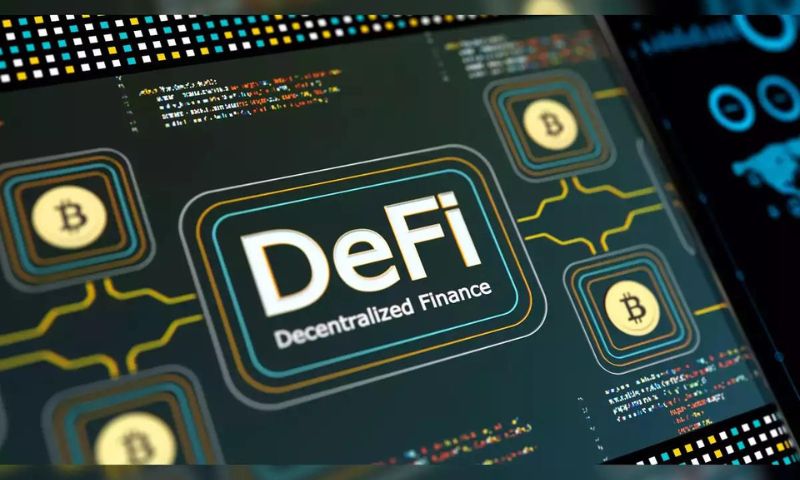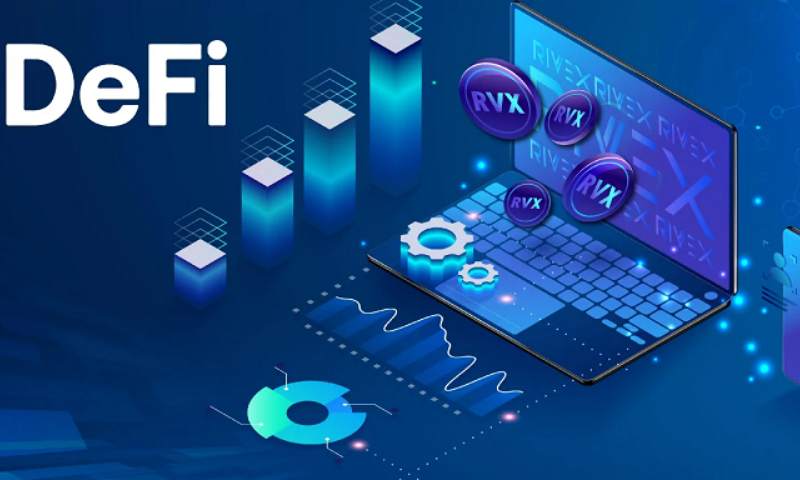As a DeFi enthusiast, you would think your investments are rock-solid. Think again. Security risks in Decentralized Finance (DeFi) lurk around every corner, waiting to trip up the unwary investor. From smart contract glitches to audit blunders, your digital dough faces dangers that traditional banks rarely see. Can you spot a scam from a mile away? How about ensuring your tokens stay put in the rollercoaster world of flash loan attacks? Let’s dive into the virtual trenches of DeFi and show these security snags they picked the wrong vault to mess with. Grab your digital armor—it’s time to make your investments unbreakable.
Understanding the Landscape of DeFi Security Threats
Recognizing Common Vulnerabilities in Smart Contracts
Smart contracts run DeFi. Think of them as code that automates money flow. But often, this code has flaws. DeFi security threats exploit these. What’s a vulnerability in smart contracts? It’s a flaw or weak spot in the code. Hackers love these. They can steal money or mess up transactions. To stay safe, know these risks. Spot them early. Do this, and you protect your cash.
Getting ahead of hackers needs smart moves. Start by learning the code’s weak parts. Like, how does it handle unexpected inputs? Or what if someone asks it to do too much at once? Cracking those answers is key for safety.
Security starts with knowing what you face. Think about a house’s lock. If it’s weak, a thief can get in. For smart contracts, “thieves” look for code easy to trick. They might send wrong data or flood the system.
We all want to think our DeFi projects are tight. We trust audits to catch slip-ups before they’re big news. But, audit failures in DeFi platforms can happen. Then, trouble starts. An audit checks everything, making sure it’s sound. Without good audits, you bet on blind luck.
The Implications of Audit Failures in DeFi Platforms
What happens when audits in DeFi platforms fail? It’s like missing a rotten step on a stairway. You think you’re safe, then down you go.
Poor audits leave doors open to thieves and con artists. They sneak in, take what’s yours. And you? Left asking why no one saw it coming. Audit failures can even shake our belief in DeFi itself. When trust drops, the whole market feels it.
What’s sad is many skip reading the audit reports thinking they’re too complex. But these papers are treasure maps, showing where X marks the weak spot. If we gloss over them, we miss the very things that keep our investments from sinking.
We must ask, did experts who know the tricks and traps check the code? Or was it just a glance, hoping for the best? Detailed audits matter. They catch the small stuff before it grows into giant problems.
So, as you dive into DeFi, keep your eyes open. Look for the risks. Dig into smart contracts. Demand strong, clear audits. This is your money’s shield. With knowledge and action, you can spot issues and stay a step ahead. Remember, in DeFi, your safety is only as good as your smarts. Keep sharp!
Identifying and Protecting Against DeFi Scams
Strategies for Crypto Asset Theft Prevention
Let’s get real about keeping your crypto safe. You’ve heard the stories. People losing their digital coins to sneaky thieves. It doesn’t have to happen to you. Here’s the deal: know how to spot the bad guys and the tricks they use.
First, keep your eyes open for anything off in smart contracts. They are like the secret codes that run DeFi. But if there’s a tiny mistake, hackers can swoop in. So, always check who’s checked the code. Good auditing is key.
And then, there’s something called rogue pools. Imagine walking into a party but it’s a trap. That’s what this is, but for your crypto. Stay clear of offers that sound too good. No free lunches here, folks.
Remember, your wallet is your castle. Protect it with strong passwords and never, I mean never, share your private keys. That’s like giving away the keys to your treasure.
Deciphering Phishing Attacks in the DeFi Ecosystem
Now, let’s talk about phishing. Imagine someone pretending to be your best friend to steal your bike. That’s phishing in the digital world. They send you emails or messages that look real but aren’t. Always double-check where messages come from before you click on anything.
Here’s the hard truth: DeFi is awesome but crawling with scams. You’ve got to be like a detective. Watch for signs. Too many promises? Probably a scam. Odd website links? Don’t click them. Strange messages about your account? Ignore them.
Stick to well-known platforms and always do your homework. Yeah, it’s like school, but for your money’s safety.
If things look fishy, step back. Better safe than sorry, right? Check twice, then check again. Get this: the scams are clever. But you are cleverer.
And hey, if you’re not sure, ask the community. The good folks in DeFi stick together. They’ve probably seen it before and can help you out.
So, here’s the bottom line. Keep it tight, keep it right. Watch for weird contract codes, avoid too-good-to-be-true deals, protect your wallet like a fortress, and be a tough nut to crack when it comes to fishy emails or links.
Stay safe and you’ll enjoy the wild ride of DeFi with your crypto safe and snug.
Navigating Through the Technicalities of DeFi Safeguards
Addressing the Complexities of Flash Loan Attacks
A flash loan attack happens fast. Hackers borrow lots of money very quickly without collateral. Then, they exploit market flaws or smart contract weak spots. Once done, they return the loan, pocketing huge profits illicitly. A bit complex, right? Let’s dive deeper.
When huge loans are taken out and then used to game the system, you feel it. This type of attack can disrupt the normal flow of trading. It shakes trust and can lead to big losses for other users. It’s like a high-speed robbery without a mask or a gun.
How do we deal with it? Reviewing smart contracts is key. Developers must check code for soft spots that hackers could hit. Plus, we all must stay on the lookout for weird market moves. Such signs could mean a flash loan attack is in progress.
Regular folks can avoid risky pools, where these attacks are likely. And stay sharp – learn how DeFi works and which places are safe. Watching over your crypto like a hawk could save it from getting snatched.
Ensuring Liquidity Pool Safety and Managing Impermanent Loss
Now, let’s chat about swimming safely in liquidity pools. These are big pots of money that crypto trading depends on. You add your money to a pool, others trade with it, and you get fees in return. Easy, right? But there’s a catch — impermanent loss.
This scary term means your pool money might lose value compared to holding onto your tokens. It’s not forever lost unless you pull out your money while down. It happens when the price of your tokens changes a lot after you’ve put them in.
To stay safe, pick pools wisely. Go for those less likely to swing wildly. Think of it as choosing a gentle stream over a stormy sea for your boat. Watch for big price changes, and know when it might be best to step back.
Regular risk checks on your investments can help too. Look into which pools are strong and which seem shaky. Don’t just jump into the water without checking how deep it is, right? Being careful helps make sure you can keep enjoying DeFi without an unexpected wipeout.
Staying safe means staying informed. Understand the risks like flash loans and impermanent loss. Make wise choices in what pools you join. Stay on top of changes. With some smarts and caution, you and your investments can stay secure in the challenging yet rewarding world of DeFi.
Strengthening DeFi Investment Security
Conducting Thorough Risk Assessment in DeFi Investments
When you put money into DeFi, think of it as a game on the playground. You need to look around and see what could go wrong. Just like scanning for a loose swing or a sharp edge can save you pain, checking DeFi projects can save you money.
First, find out about the project’s smart contracts. Smart contracts are like the rules of the game. If they have holes or errors, things could end badly. You should know that not all projects review their smart contracts well. This could leave a door wide open for thieves to steal your coins.
Now, let’s dig into auditing, which is like having a teacher check the playground. Some DeFi projects skip this step to save time or money. Big mistake. Without a good audit, you might miss a weak spot in the project. Then, all your tokens could vanish in a flash.
Next up is keeping an eye out for scams that trick you into giving away your crypto. Scams are everywhere. A common one in DeFi is when a new project looks good but is really a trap. This is called a rogue pool. Only dive in after you’ve checked for danger.
Understanding the risks and how to manage them is key. Think about what could go wrong and have a plan. If a project falls into trouble, what will you do? This is where risk management in DeFi saves the day.
Understanding the Importance of DeFi Insurance Coverage
Now, let’s talk about DeFi insurance. It’s a safety net. Just like you’d have health insurance in case you get hurt, DeFi insurance helps if something goes wrong with your investment.
Insurance in DeFi can help you get back some of your money if the project you invested in gets hit by theft or other bad luck. But know this: not all insurance covers every type of mess. Some might not cover losses from smart contract errors or when the price of crypto drops a lot.
Before getting DeFi insurance, ask lots of questions. What does it cover? How much will it pay back? It’s like asking a guard about the rules before you play a new game. You need to know how you’re protected. If the rules are too hard or don’t help much, maybe this isn’t the game for you.
Keep in mind that the world of DeFi is like a wild playground. It changes fast and can be rough. Always do your homework. Read lots. Talk to others who know their stuff. And always stay on your toes. Remember, it’s your coins at stake. Make sure you play it safe.
In this post, we’ve peeled back the layers of DeFi security. We looked at common smart contract flaws and what happens when audits fail. We know these issues can scare users and investors away from DeFi. Don’t let fear win. You’ve learned how to spot scams and protect your crypto. We’ve unpacked the tricky stuff, like stopping flash loan attacks and keeping liquidity pools safe.
Remember, no one is safe by accident in DeFi. It takes work. You must always check where you invest and consider getting insurance. DeFi is powerful and can change our future, but only if we can trust it. You’re now armed with the knowledge to make smarter, safer choices in this fast-moving space. Use it well, stay safe, and keep learning. Change is constant in DeFi, and staying informed is your best defense.
Q&A :
What are the common security risks associated with DeFi platforms?
Decentralized Finance, or DeFi, platforms are not immune to security threats. Some common risks include smart contract vulnerabilities due to coding errors, which can be exploited by hackers. There’s also the risk of liquidity issues, where insufficient funds can result in significant financial losses for users. Additionally, DeFi platforms can be susceptible to operational risks such as poor governance and regulatory uncertainty.
How can users protect themselves from DeFi security risks?
To safeguard against DeFi security risks, users should take several precautions. Firstly, conducting thorough research and due diligence on DeFi projects is essential. Learning to recognize red flags in smart contracts and using services that audit these contracts can also be beneficial. Users should employ security measures such as using hardware wallets for storing assets and enabling multi-factor authentication. Staying informed about the latest security practices in the DeFi space is equally important.
What are the implications of rug pulls in the DeFi ecosystem?
Rug pulls are a type of scam prevalent in the DeFi ecosystem, where developers abandon a project and escape with users’ funds. The implications of such incidents include loss of trust in the DeFi space, financial loss for investors, and a potential increase in regulatory scrutiny. Rug pulls can damage the reputation of the broader DeFi community and deter new participants from engaging with decentralized financial services.
How do flash loan attacks work in DeFi, and why are they a concern?
Flash loan attacks are a frequent concern in DeFi and involve borrowing large amounts of cryptocurrency without collateral due to the uncollateralized loan feature in some DeFi protocols. The attacker can use this loan to manipulate the market, such as by artificially inflating the price of an asset before selling it or to exploit vulnerabilities in other DeFi protocols. They repay the loan within the same transaction block, often leaving the protocol and users at a loss. These attacks are worrisome as they can destabilize DeFi platforms and erode user confidence.
What role do oracles play in DeFi security?
Oracles play a pivotal role in DeFi security as they are third-party services that provide smart contracts with external information, often crucial for triggering contract execution. However, any manipulation or errors in the data supplied by oracles can result in financial losses or faulty contract outcomes. Therefore, the integrity, reliability, and security of oracles are vital for maintaining the overall security of DeFi systems.


